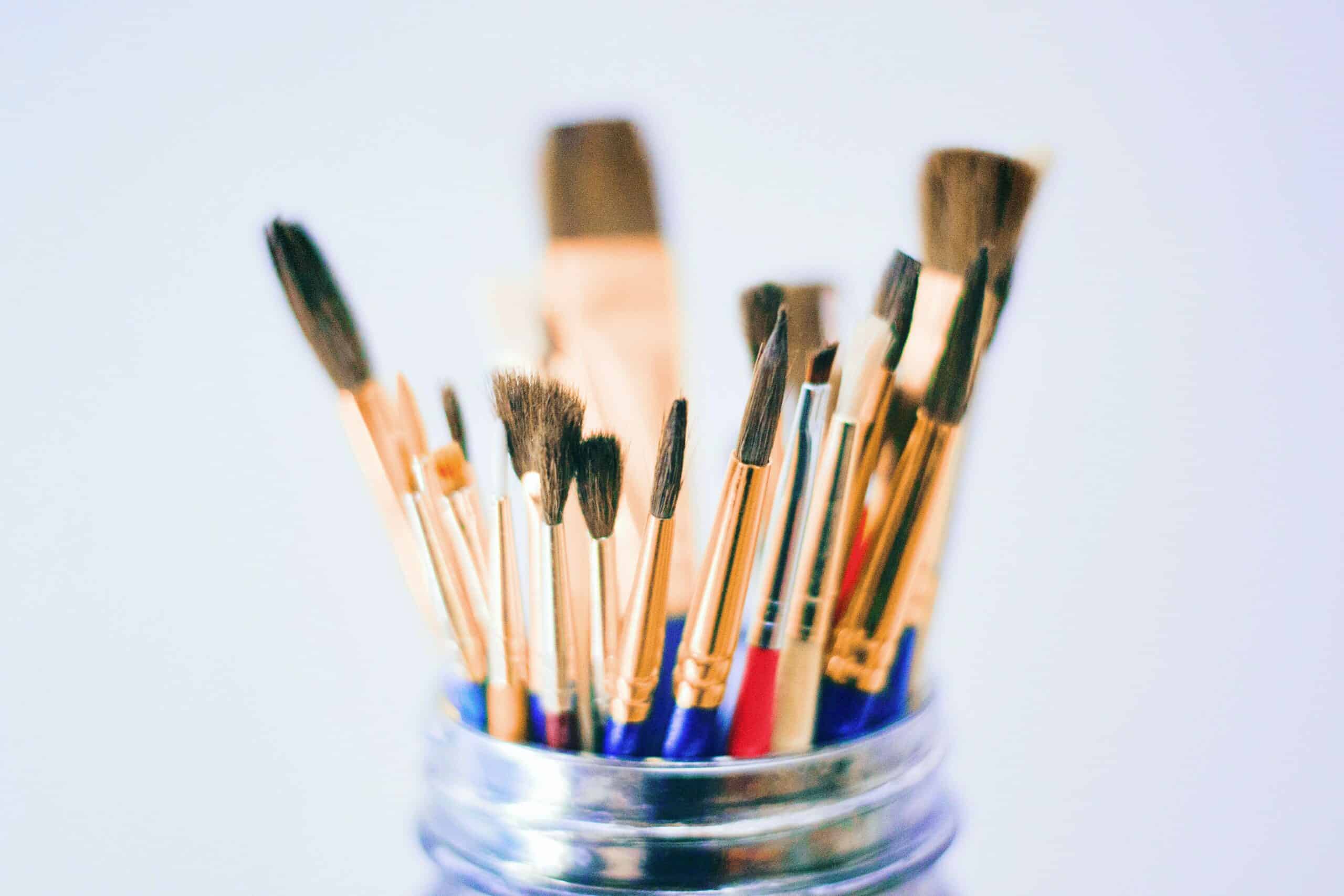How To Make Acrylic Paint More Vibrant
Creating vibrant acrylic paintings is the goal of every artist! Whether you are a beginner or an experienced painter, learning to make your colors richer and more vivid can take your artwork to the next level. As a professional acrylic painter with over 25 years experience, I am here to share my expert tips on how to make your paint pop off the canvas.
If you want bolder color that stands out in your work, there are several steps you should consider. Getting familiar with some basic techniques will help you achieve greater depth and saturation in each brush stroke. From prepping the painting panel correctly to understanding different types of mediums – these key components will give you full control when creating those eye-catching pieces of art.
My simple yet effective methods for making acrylic paints more vibrant have been tried and tested by many students throughout my career as an instructor. With just a few adjustments to your technique, you’ll be amazed at how much brighter your pallet will become! So let’s dive right into it - read on for all the know-hows on perfecting those rich hues with fantastic results!
Definition Of Acrylic Paint
Acrylic paint is an artistic medium that has been used to produce beautiful works of art for centuries. It's a unique combination of pigment, binder, and solvent that creates a vibrant and durable finish. Acrylic paints are made from colors suspended in acrylic polymer emulsion which gives them their glossy and opaque properties. They dry quickly compared to other traditional painting media like oil or watercolor, allowing the artist to work faster and achieve bolder results. In addition, it’s easy to mix colors together with acrylics to create new shades and hues - something that can be difficult with more traditional media. With its ability to capture light and color unlike any other medium, acrylic paints can bring life to even the dullest subjects on canvas. From landscapes and seascapes to abstract shapes and textures, this versatile material allows artists to express themselves fully without compromising quality or vibrancy. As you delve further into this wonderful world of acrylic paintings, you'll find endless possibilities for creating captivating works of art! Now let's move onto exploring how we can use color mixing techniques to make our paintings even more dynamic.

Color Mixing Techniques
One great way to make acrylic paint more vibrant is through color mixing techniques. The key to successful color mixing lies in understanding the different properties of each pigment and how they interact with one another. It's important to combine colors that are compatible – meaning those that will produce a natural looking result when blended together. For example, yellow and blue are complementary colors which can be used to create greens. This combination creates an even transition between the two shades rather than leaving you with an unnatural 'stain' on your canvas.
When working with pigments, it's also essential to use high-quality materials for best results. Low-grade paints may appear bright at first but often lack luster after drying and become dull over time as well. Investing in good quality pigments ensures that the colors stay true and won't fade away quickly or require frequent touch ups.
Additionally, some pigments have special textures such as shimmer or glitter effects which add additional dimension to works of art created using them.
Using these tips can help ensure that you get the desired effect from your work, no matter what type of painting project you're undertaking! Now let's look at identifying high-quality pigments so we can achieve optimal results every time.
Identifying High-Quality Pigments
Now that we have explored different color mixing techniques, it's time to discuss another important factor when creating vibrant acrylic paintings: identifying high-quality pigments. It is essential for the painter to be discerning about which pigments they choose in order to achieve maximum saturation and luminosity. As a matter of fact, some paints are made with less expensive materials like fillers or extenders that will ultimately result in duller colors. To illustrate this point better, let us take a closer look at what makes up an ideal pigment selection.

The first thing to consider when searching for quality pigments is their origin. Pigment manufacturers often source from reputable suppliers who offer reliable products with consistent performance over time. Additionally, natural minerals used in artist grade paint contain higher concentrations of pure pigment than those found in student grade paints. This ensures stronger lightfastness as well as richer hues and shades. Furthermore, artists should always read labels carefully before purchasing a product to make sure they get exactly what they need - no more, no less!
Finally, using the right mediums can also help enhance the vibrancy of your colors while providing other benefits such as extending drying times and increasing flexibility. With these tips in mind, any artist should feel confident in selecting the best pigments available so that their work stands out with beautiful results every time! Ready to learn how blending mediums play into all of this? Let's dive into that next...
Blending With Mediums
To make your acrylic paint more vibrant, it's important to understand the relationship between colors and mediums. Blending with mediums can help create a variety of different effects in your artwork. The most common types of acrylic painting mediums are gels, pastes, and liquids. Each type has its own unique properties that will affect how the color behaves. Gels provide texture and body when mixed into paints, while pastes allow for an even flow of the paint onto the canvas or paper surface. Liquids such as water-soluble oils add transparency and luminosity to colors.
It is also possible to mix colors with other media such as wax or oil to achieve a range of finishes from glossy to matte.
By adding these materials you can enhance the vibrancy of certain colors by creating interesting reflections on their surfaces. Experimenting with various combinations of colors and mediums can lead to exciting results!
With all these options available, it pays off to take some time experimenting before committing yourself fully to one technique or material combination. Choosing the right brushes will help ensure that you get the desired effect every time you work on a painting project.
Choosing The Right Brushes
Choosing the right brushes can make all the difference when painting with acrylics. I'm talking about taking your time, perusing the brush aisle of your favorite art store like it's an old-school record shop. There are so many options out there – natural and synthetic bristles, long and short handles, angled and round tips – that you'll need to do some homework to figure out which ones work best for you.
When selecting a brush, start by considering what kind of stroke you'd like to create: broad or thin? Do you plan on doing any blending or stippling? All these factors will determine the type of bristle material and size of brush head you should choose. Natural hair brushes usually give more control over how much paint is applied as well as better color absorbency than synthetics. But if you're looking for something easier to clean and maintain in between coats, then go with a synthetic option instead.

In terms of shape, flat brushes provide wide coverage while rounds offer precision detailing. And don't forget specialty shapes such as filberts, bright cuts and fan brushes for those special finishing touches! With just a bit of research (and maybe some trial and error) you’ll soon be able to find the perfect set of tools for whatever project comes your way. Onto our next step - adding those final flourishes...
Finishing Touches
Once you have finished your painting, there are a few final touches that can help make it even more vibrant. First of all, use a glossy varnish or topcoat to bring out the colors and give your painting an extra pop of vibrancy. This is especially important if you plan on displaying your work in bright surroundings like near windows or outdoors. Next, consider adding metallic paint accents for some added depth and contrast. Finally, I recommend experimenting with different lighting options to further emphasize any unique features in the painting. For example, try using a lamp from multiple angles to highlight certain textures and details. With these finishing touches, you'll be sure to create an eye-catching piece!
Conclusion
As an acrylic painting expert, I can say that there are many ways to create vibrant and beautiful works of art with this medium. By understanding the basics of color mixing techniques, selecting quality pigments, blending with mediums, choosing the right brushes, and adding finishing touches; you'll be well on your way to creating captivating masterpieces.
One interesting statistic is that if you combine only three colors in a single work of art – red, yellow and blue – it’s possible to mix up over a million different shades!
This shows just how powerful acrylic paint can be when used correctly. With practice, you can use this versatile medium to bring life to any canvas.
Acrylic paints aren't just for professionals either - anyone who puts their mind to it can make stunning pieces of artwork. So don’t shy away from experimenting with this amazing material – let's get creative together!






